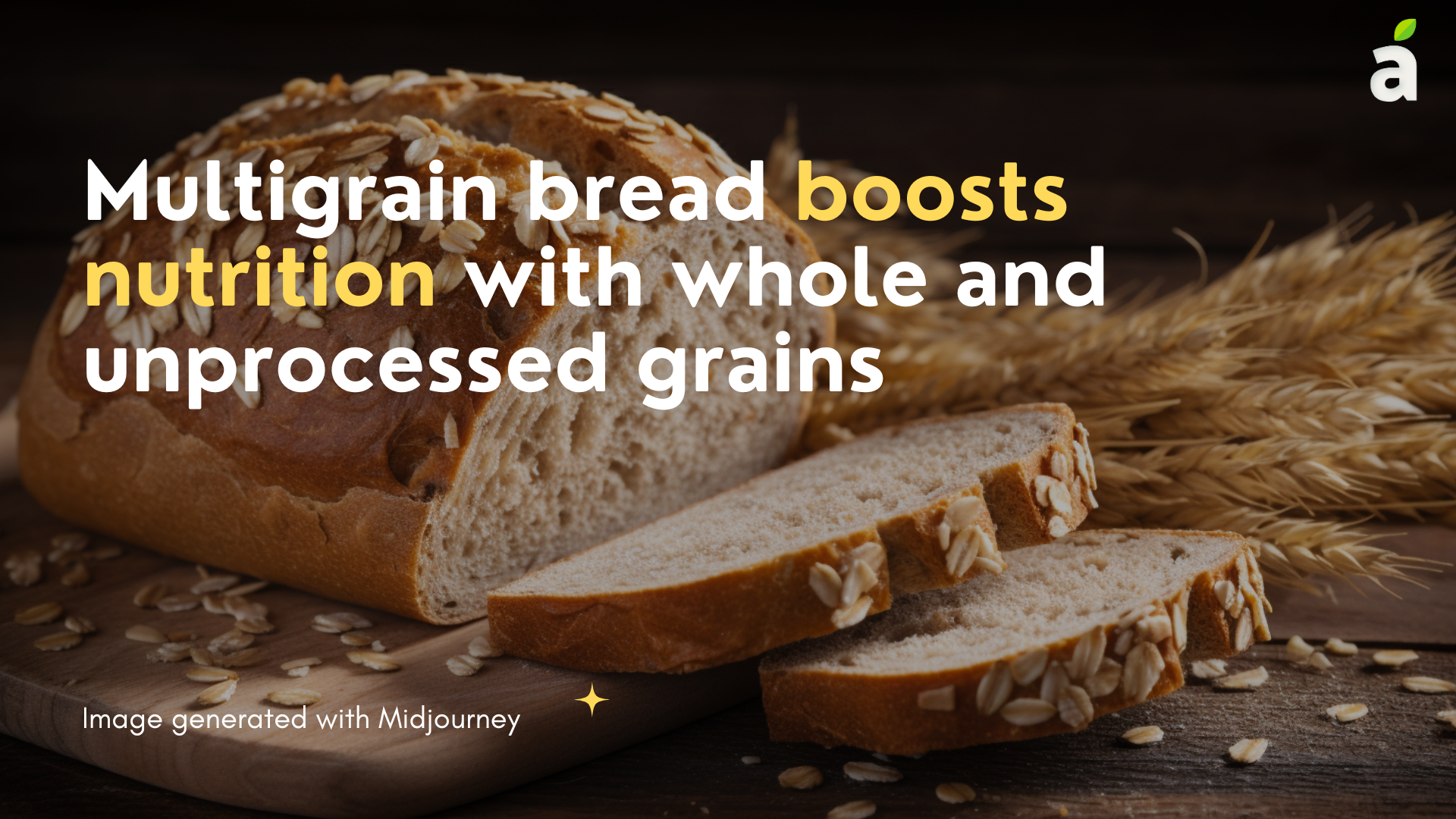Published Date January 24, 2003
The Marvels of Multigrain Bread
By Naurin Ansari
3 min read
Last update date: January 24, 2003

When it comes to selecting a nutritious and tasty bread option, multigrain bread stands out. Multigrain bread has gained popularity for its nutritional value and diverse flavour profile. When it comes to selecting a nutritious and tasty bread option, multigrain bread stands out. Multigrain bread has gained popularity for its nutritional value and diverse flavour profile.
In this blog, we will delve into the world of multigrain bread, exploring its composition, the advantages it offers, the difference between multigrain and whole grain bread, and whether multigrain bread is a good choice for individuals with diabetes.
What is Multigrain Bread?
Multigrain bread is a type of bread that combines two or more grains in its preparation. It commonly includes grains like millet, oats, wheat, barley, and rye, and may also incorporate seeds such as pumpkin seeds, flaxseeds, and sunflower seeds.
The composition of multigrain bread can vary, with some recipes incorporating up to nine different grains. Both whole and unprocessed grains can be used in the production of multigrain bread, adding to its nutritional value.[1]
Health Advantages of Multigrain Bread
Multigrain bread has several health advantages that are easy to understand. Here are some of the benefits:
- Helps with Digestion: Multigrain bread is high in fibre, which keeps our digestive system healthy. It helps prevent constipation and ensures our stomach works properly.
- Gives Steady Energy: The carbohydrates in multigrain bread are called "complex carbohydrates." They break down slowly in our bodies, giving us a steady supply of energy throughout the day.
- Packed with Nutrients: Multigrain bread contains different grains and seeds, which means it has a variety of essential vitamins, minerals, and antioxidants. These nutrients help keep our bodies healthy and protect us from diseases.
- Reduces Disease Risks: The nutrients in multigrain bread, like fibre, vitamins, and minerals, are linked to a lower risk of chronic diseases such as heart disease, certain cancers, and type 2 diabetes.
- Keeps You Full: Multigrain bread's fibre content helps you feel full and satisfied. This can be helpful if you're trying to manage your weight because you won't feel hungry right after a meal.
Choose whole-grain multigrain bread and consult a healthcare professional or dietitian for guidance.[2][3]
Multigrain vs Whole Grain Bread
Multigrain bread contains around 65 calories per slice and has a mix of fat, carbs, and protein. It is made from more than one type of grain and offers a rich flavour. On the other hand, whole wheat bread is considered healthier as it is made from 100% whole grains, providing essential nutrients like B vitamins, iron, and zinc.
Whole grain bread can lower the risk of various health conditions and is a good source of protein, omega-3 fatty acids, and fibre. The key difference is that whole grain bread includes the entire grain, while multigrain bread may contain a mix of refined and whole grains.[4]
Multigrain Bread and Diabetes
For individuals with diabetes, managing carbohydrate intake is important. While multigrain bread can be part of a diabetes-friendly diet, it's crucial to control portion sizes and choose the right type of multigrain bread. Opting for multigrain bread made with whole grains and checking the glycemic index (GI) can help select a bread that has a lesser impact on blood sugar levels. [5]
Takeaway
Multigrain bread offers a delightful combination of flavours, textures, and nutritional benefits. With its diverse grain composition, it provides essential nutrients, dietary fibre, and sustained energy.
While multigrain bread shares similarities with whole-grain bread, it is essential to differentiate between the two to make informed choices. For individuals with diabetes, including multigrain bread in moderation and opting for whole-grain varieties can be part of a balanced diet.
So, the next time you crave a wholesome and tasty slice of bread, consider reaching for multigrain bread. Enjoy the goodness it brings to your table, and savour the blend of grains that nourish both your body and your taste buds!
References
- https://www.delightedcooking.com/what-is-multigrain-bread.htm
- https://blog.thebakersdozen.in/multigrain-whole-wheat-loaf/benefits-of-the-seeds-in-our-multigrain-whole-wheat-loaf/
- https://theobroma.in/blogs/articles/benefits-of-multigrain-bread
- https://ghc.health/blogs/all-about-men/multigrain-vs-whole-wheat#:~:text=Unlike%20whole%20wheat%2C%20multigrain%20is%20not%20made%20of,Whole%20wheat%20is%20made%20of%20100%25%20whole%20grains
- https://phablecare.com/diabetes/multigrain-bread-for-diabetics/#:~:text=Risks%20of%20Over%20Consuming%20Multigrain%20Bread%20For%20Diabetes,can%20cause%20irritable%20bowel%20syndrome%20and%20nutrition%20deficiency
Keep reading

The germination of the seed
It is expected of women to take the utmost care during pregnancy. They are given a list of do’s and don’ts during pregnancy and even after delivery
By Hetvi Shah

The Dark Side of Chocolate
By Hetvi Shah

Unlocking the Secrets of Cholesterol
By Naurin Ansari

Navigating the World of Caffeine
By Team Ariso
Choose Healthy With Us.
Know the real truth about your food. Stay informed and healthy, for free.

Download the App Now
Certified nutritionists trust our food recommendations. Safe to say, so can you :)









